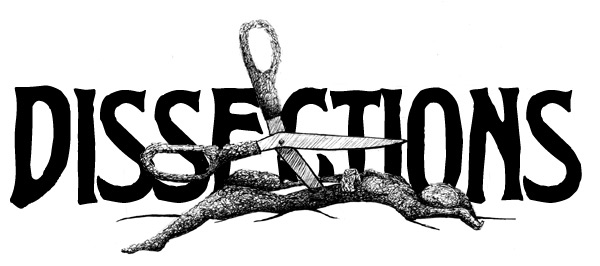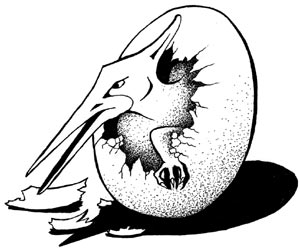[an error occurred while processing this directive]



Teaching Horror, Training Van Helsing
Daniel Schnopp-Wyatt
I used to teach horror. My first teaching position was at a down-at-the-heels liberal arts college perched on the bony spine of the Appalachian Mountains. It was a good place to teach horror. The students were a receptive if often less than adequately prepared lot. The administration was, if not supportive, then apathetic to the point of wilful ignorance about academic affairs. My department chair had no interest in horror as a phenomenon but was supportive of any approach that promised to actively engage students in the learning process. ‘Teach what you want,’ he said, ‘I’ll defend you till the end,’ and he did, protesting and writing letters to the board of directors as I fled a small crowd of administrators bearing down on my office with pitchforks and smoky torches. It was that kind of place.
The campus was perched atop a mountain, its windows like glazed eyes overlooking a river town in which the river itself had died, leaving behind an oxbow scar that each year grew shallower and more stagnant. The college shared the mountain with a sprawling cemetery; a ramshackle, disused space dominated by a handful of mature oaks and maples swollen like ripe ticks on the long-forgotten dead. A place where grave markers toppled by vandals or restless spirits lay with their faces smothering inches-deep in the soil, held fast and sucked into the cold earth, trapped their by their very weight like a horse in quicksand. Many of the smaller graves were anonymous by virtue of their epitaphs, lightly scratched into blocks of sandstone, gradually dissolving and like the dead they commemorated, returning to the earth. Its most famous inhabitant, Octavia, was buried alive in 1892, the first victim of a local plague of ‘sleeping sickness’, an inexplicable and transient coma condition. When the coroner exhumed her, two days after her premature interment, she was found to have shredded first the coffin lining and then her face. It remains unclear whether she expired from oxygen deprivation, blood loss, or sheer terror. Hers was the only grave visited with any regularity.
The college’s one graduate programme was a lower tier medical school built on the site of an old public scaffold, the most famous victim of which was a white-blonde, red-faced boy named Cottontop, whose level of intellectual functioning wasn’t adequate to the understanding of a murder charge and its outcome. He had to be forcibly dragged onto the scaffold and held over the killing hole while he sobbed and screamed, ‘They made me do it! Mama! Mama! Mama!’ The embarrassing historical marker commemorating the event was discreetly tucked outside the sub-basement entrance to the morgue where cadavers accumulated in the frigid bowels of the anatomy lab and were rapidly reduced to long steel trays of faceless, increasingly interchangeable parts. An anatomist, late of Edinburgh, presided over the flaying, the laying bare of neural tracts and skeletal articulations, and the discrete disposal – by means of cremation outside of town – of the recent dead.
With regard to ghosts – haints, in the Appalachian dialect – there was a crying girl, heard but not seen, in a stairwell, and an icy spot that roamed the women’s oldest dormitory, thought to be the damned soul of a young woman who hung herself with a pair of her roommate’s stockings after being raped by her fiancée’s brothers. The library, tucked into the centre of the graveyard, was once an old coal miner’s hospital, haunted by the psychic echo of tubercular coughing and the sound of gurney wheels on terrazzo floors long after the wards turned into stacks and the terrazzo disappeared under hushed carpeting.
So I taught horror. My first foray was an intensive summer course in Gothic literature and film. I had about 15 students – huge for a summer class. So much interest, I was thrilled. I selected readings: The Mysteries of Udolpho, Carmilla, Strange Case of Dr. Jekyll and Mr. Hyde, Dracula, The Case of Charles Dexter Ward. I initially thought the texts would sell themselves. After all, thought the naive young professor, who wouldn’t want to read these books. One student, a Jane Austen devotee, actually finished The Mysteries of Udolpho. ‘It was OK,’ she said, ‘a little boring.’ I confronted the class. Responses ranged from apologetic whining, ‘I tried but kept falling asleep,’ to the crudely blunt, ‘It’s an unreadable piece of crap.’ I felt like a complete failure.
Carmilla went much better. Perhaps it was the shorter length, the narrative, the more accessible prose, or the simple fear of failing the class but people read, tested well and thoughtfully discussed. I showed the class’s first film, Carl Dreyer’s haunting and atmospheric Vampyr. The librarian found me an excellent copy on VHS. I arranged to use the school of medicine’s projection room and became quickly enraptured by seeing a favourite film on the big screen for the first time. As the film’s climax approached I remembered that I was teaching and turned to look at the class. Four students were asleep, one half of a couple sitting in the back hastily removed her hand from inside the other half’s pants. One young man had snorted a crushed pain pill, its blue residue ringing his right nostril and collecting in the fine hairs of his first moustache. The effect, in the flickering light and shadow of the screen, when combined with drooping eyelids and unwavering pinpoint pupils, was that of a low-budget zombie film. Everyone else was apparently doodling or silently praying for the ordeal to be over. I felt like I’d been kicked in the stomach. I wanted to leap in front of the screen and scream, ‘What the hell is wrong with you people?’ Instead, I turned back to the screen and made a point of savouring the village doctor’s suffocation in a deluge of flour.
The next day, I screened Hammer Studios’ The Vampire Lovers. It was very well-received. I had been worried about the film’s overtly sexual content. The students, with what may have been feigned nonchalance, were pleased. The one apparent exception to this was the young Jane Austen devotee, who remained very quiet during the discussion and later told me that the film had made her feel ‘dirty’ and that she had spent the afternoon in her dormitory room, praying about it. The general consensus about the film was that it was ‘fun’ and that horror films should be fun. We watched Dario Argento’s Susperia in a damp subbasement four floors below street level that could have been prominently featured in one of the Saw movies. In what was surely a personal career highpoint, three students bolted from the room in terror. Thus it went for three years. I eventually taught horror in cultural psychology, the psychology of film and archetypal psychology. Horror worked.
Eventually they came for me or, rather, I was sent for. The academic dean’s secretary appeared on my office threshold with the witch burner’s glint in her eyes. I was welcomed into his quarters with a firm but regretful handshake, bade to sit and treated to a brief discussion of Victorian poetry. The Dean liked his sentimental and uplifting; I preferred the morbid and fantastic. Somewhere along the way – as the Dean was quoting Henley’s Invictus – I realized what was about to happen. It was the sadistic purr in his voice that did it, I imagined Vincent Price casually heating a poker in a brazier of coals as I lay strapped to an oak table. I wept; it seemed the sensible thing to do.
Adrift, I sought another position and was fortunate enough to be found by one. Everything changed. I went from attempting to motivate apathetic undergraduate students in a traditional liberal arts setting to attempting to keep up with highly motivated students in an experimental graduate programme teaching professional counselling. Recalling the transition after half a decade, I resembled nothing so much as a naive governess alighting from the coach to take up a new position at the decaying mansion surrounded by a festering, impenetrable swamp and saying, ‘Oh! Isn’t it the most wonderful thing you have ever seen?’
In truth, it has been wonderful and tremendously fulfilling but I miss my old relationship to the monster. The monster that had once been my friend, the horror that hooked my students through the gut and dragged them to the place I wanted them to go became at once completely mundane and horribly real. Now I train students to pick up the candelabra and walk into the dark places. I teach them to stand between the weak and the wicked. I hone their wits like oak stakes. I tell them to be strong, to be resolute, to be brave and I send them out into a world where the monsters are horrifyingly, sickeningly real.
I used to teach horror. I spent many a happy hour discussing the hero’s journey in Dracula, arguing about cultural attitudes toward death in Frankenstein, and even the role of projected male desire in lesbian vampire movies. I still teach horror but it’s no longer a genre. It’s no longer an interesting intellectual excursion into the darkly romantic. It’s no longer, as my students said it should be, fun. I used to lament my limited ability to remember information, now I know things I would desperately love to forget.
I wish I could forget the difference between a punishment bite and a control bite. I wish I could forget the ways to cause a child lingering pain while leaving no external wounds. I wish I didn’t recognize the furtive submissiveness of the battered woman and the exaggerated startle response of the abused child. I wish I didn’t recognize the grim hopelessness of opiate withdrawal and the sweaty manic posture of prolonged amphetamine use. I wish I could see a ragged old quilt and not think of the family who held a son’s ex-girlfriend in captivity while they raped her, tortured her, and fed her dog faeces. There is a peculiar shade of pink I hope I never see again. When I see a police car in someone’s driveway my mind floods with terrible possibilities. The smell of kerosene fumes conjures memories so dark I can barely recall that there is light and goodness in the world. I wish I could once again read Lovecraft with an appreciation for his prose and imagination instead of a strong suspicion that he had insight into some unspeakable truth about the human condition.
I love the monster. The monster has a purity of purpose that humans
never possess. I long for the monster – that happy abstraction
of human angst, fear and rage. I wish monsters walked the face of
the earth. I wish werewolves lurked in the darkest of the hillside
thickets. I wish zombies periodically surrounded isolated farm houses
and that revenants lingered at the site of untimely deaths. I wish
the night sky held the possibility of a witch silhouetted against
the moon or the sound of enormous leathery wings. I wish I could believe
in the cursed book, the enchanted jewel, in fallen angels trafficking
with mortals. I simply can’t. In a way that makes it more precious.
And people? What about people? I love people – in the particular.
As soon as I start to consider people in the abstract my gut churns
and my teeth clench. It’s not that they scare me – although
I’m often acutely aware of that which they are capable. People
– each of us – carry within the destructive potential
of the monster. People are all too real. I used to teach horror and
now I’m part of the narrative.